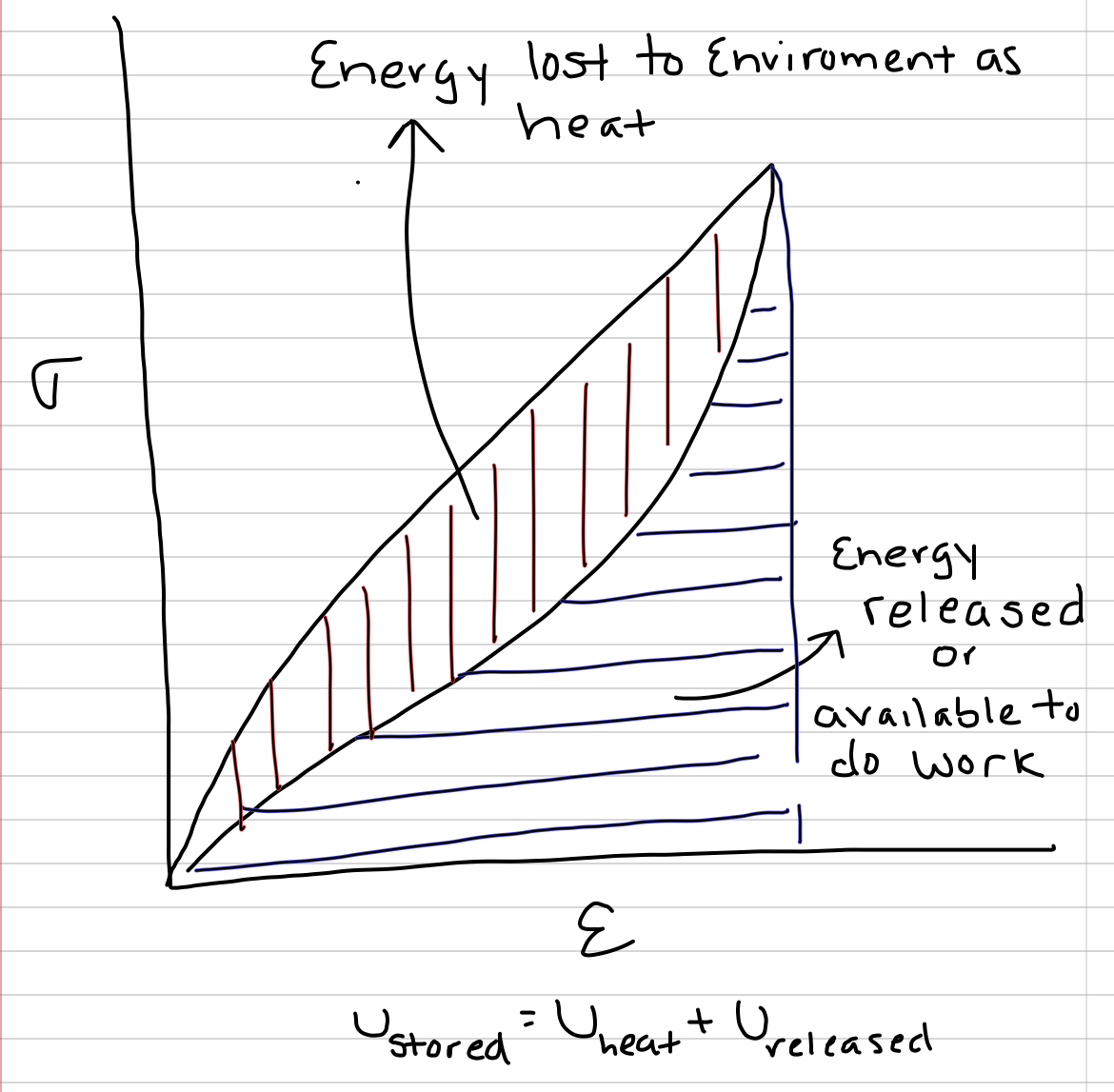2.7 The work that a strained material can do is always less than the work done to deform the material
 Figure 2.11: The total area under the loading curve is the stored elastic strain energy density. The area under the unloading curve is the fraction of stored elastic strain energy density that is returned, or available to do work. The area between the two curves is the fraction of stored elastic strain energy density that is lost to the environment as heat
Figure 2.11: The total area under the loading curve is the stored elastic strain energy density. The area under the unloading curve is the fraction of stored elastic strain energy density that is returned, or available to do work. The area between the two curves is the fraction of stored elastic strain energy density that is lost to the environment as heat
The stress-strain curve measured while unloading a material is always depressed relative to the curve measured while loading the material. The area under the loading curve is volume-standardized work done on the material (so the actual work is this number times the volume of the material). This volume-standardized work is equal to the stored strain-energy density. The area under the unloading curve is the fraction of the stored strain-energy density that is available for doing mechanical work on surrounding matter. This released elastic strain energy is always less than the stored elastic strain energy. The difference between the stored energy and the released energy is transferred to the environment as heat.